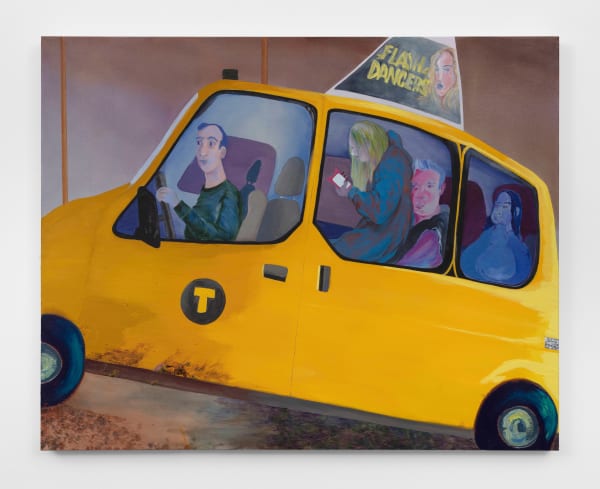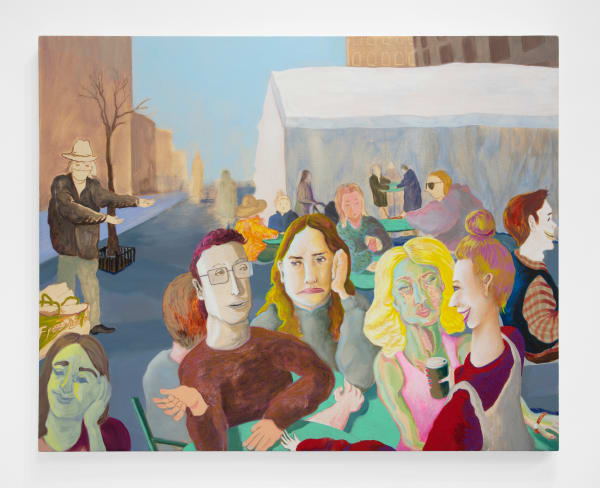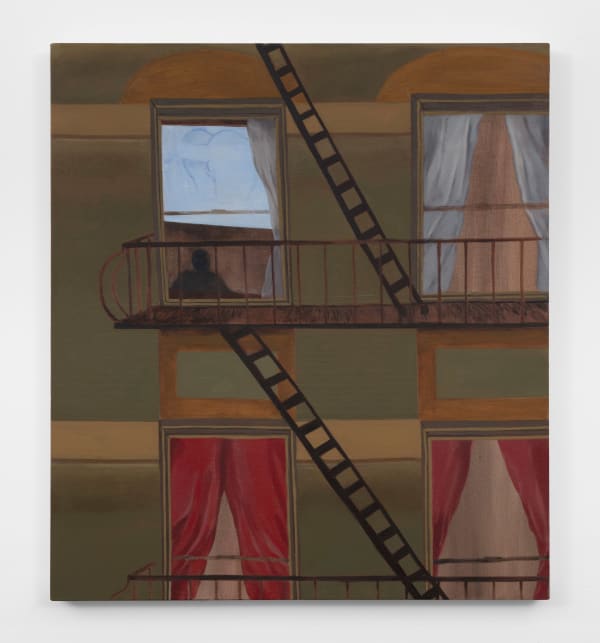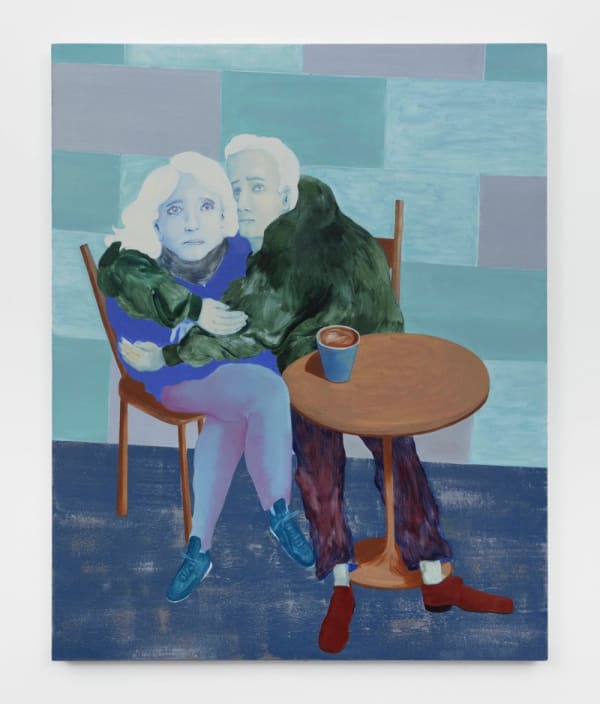Maggie Ellis: Strange Strangers
Charles Moffett is pleased to present Strange Strangers, a solo presentation of 13 large, figurative oil paintings by Maggie Ellis (b. 1991, Atlanta, Georgia; BFA SCAD 2014; MFA Hunter College 2017) that capture candid scenes from New York City, such as a prewar apartment building façade punctuated by a man watching pornography with his window open (The Neighbors), and the colorful cast of characters in public spaces (Outdoor Dining; Pizza Party; IMAX; Outdoor Dining II). These diaristic compositions represent the fleeting moments as the artist remembers them (via ink or pencil studies) rather than from photographic reference or direct observation. Ellis adapts her stylistic repertoire and painting technique to suit each composition, ranging within the same frame from photorealistic precision to frenetic and gestural. “The figures themselves are unrealistic, exaggerated just enough to become varying degrees of preposterous, bizarre, grotesque, and camp,” describes Ellis.
The exhibition’s title, Strange Strangers, refers most directly to the fact that the works on view are distorted anthropological observations of random people around New York. Psychologically, the show’s disconcerting figurative style interrogates the idea of otherness to a near-satirical extent, with not only mildly morphed expressions and caricatured features, but also bizarrely random scenarios that finely oscillate between absurdity and mundanity based on the depth of the viewer’s analysis. An unflinching observationalist, Ellis’ subject matter ranges from pleasant and innocuous (on first glance, anyway) to voyeuristic and disconcerting.
Ellis describes her heavy incorporation of the comically distorted as “a rejection of my upbringing and a protest of the rules of womanhood I was raised under in the rural South, subverting taught notions of being pretty, lady-like, and polite. I’m expressing my right to be irreverent, unruly, and crude as a woman.”
Ellis’ influences include the visual language of 1990s Nickelodeon, as well as the compositional themes of 16th-century Dutch and Flemish drawings (particularly Bruegel), the figurative qualities of Alice Neel, and the humorous approach of seminal American cartoonist R. Crumb. Particularly in Ellis’ paintings that contain a large number of people, it’s hard to ignore the compositional and thematic influence of the German Expressionists of the Weimar Republic, such as George Grosz and Otto Dix. Other stylistic influences, evident in deliberate, isolated bursts across Ellis’ oeuvre, are Impressionism and French Post- Impressionism.
On anonymity and otherness, Ellis remarks: “After living in New York City for six years, in stark contrast to the rural Southern town where I grew up, there is a comfort in not knowing the people I am constantly surrounded by. I find freedom in my anonymity and I embrace it. Walking around in this sea of infinite strangers, sightings of the uncanny are common. I am seeking out what is incongruous, funny, and strange. I know what is in front of me is fleeting and I have to act fast to remember. I am distilling these images from a total overabundance of visual cacophony. I treat it like my eyes are the camera and I’m capturing film stills of a satire. The drawings are eventually used as reference material for painting and become distorted as people, places, and things are recalled or invented. In the paintings, I further manipulate these scenes by stringing together a multiplicity of painting techniques pulled from art history, my own inventory of painting languages, or memories from life.”
Embodying the ethos of her paintings, Ellis describes of her own New York experience: “On a crowded subway I feel nurtured (and disgusted), a singular body being held in a sea of bodies. The train car serves as a dirty womb carrying all of us. And we are speeding through dark mysterious cavities under the city. We don’t know each other but we’re together. My eye moves around independently of my body and I become a wandering eye watching. I am perceiving and being perceived at once. The perspective of an outsider has always been my vantage point.”
Strange Strangers is Maggie Ellis' second solo exhibition with Charles Moffett. She lives and works in New York and is represented by the gallery.

























